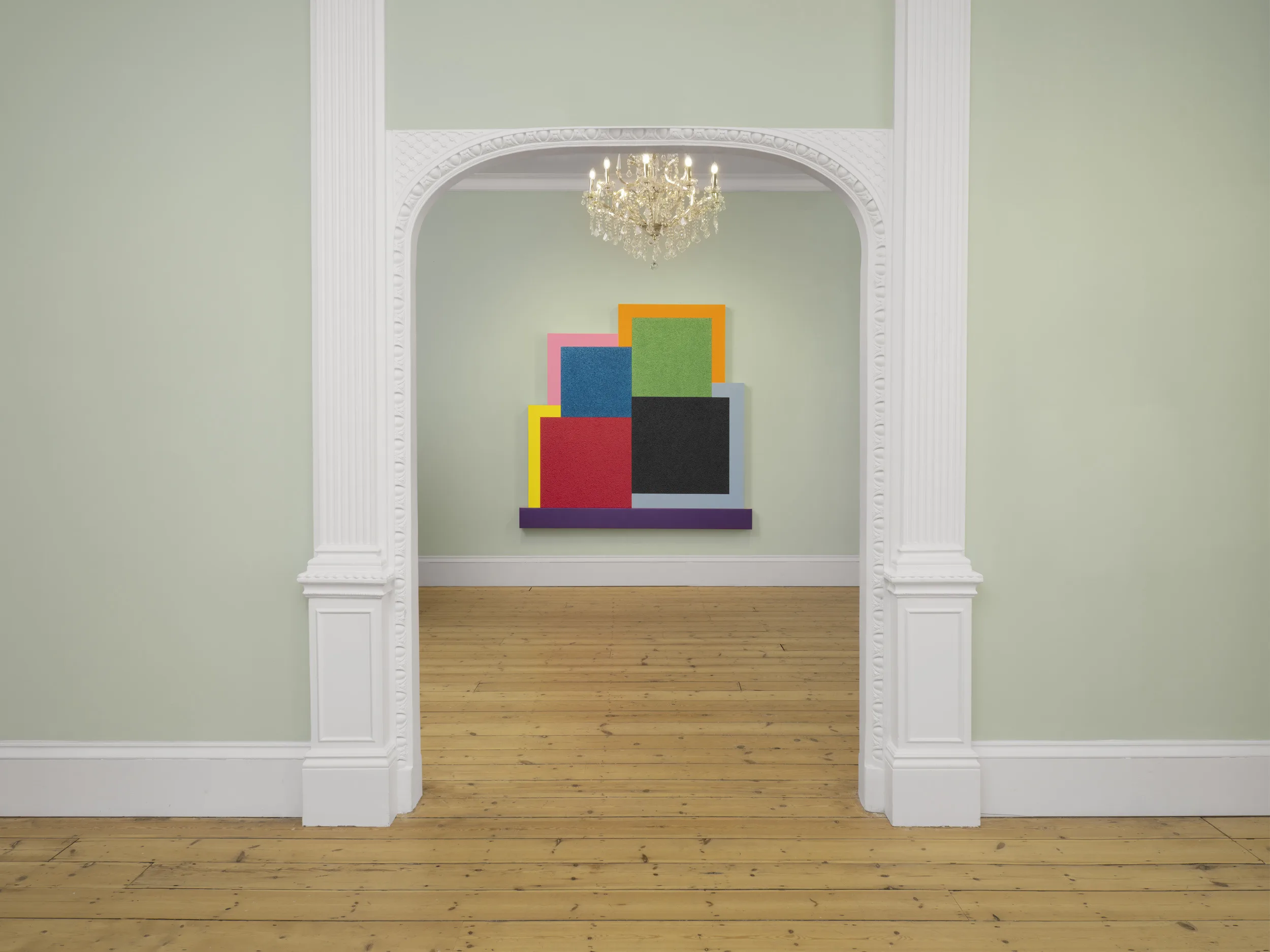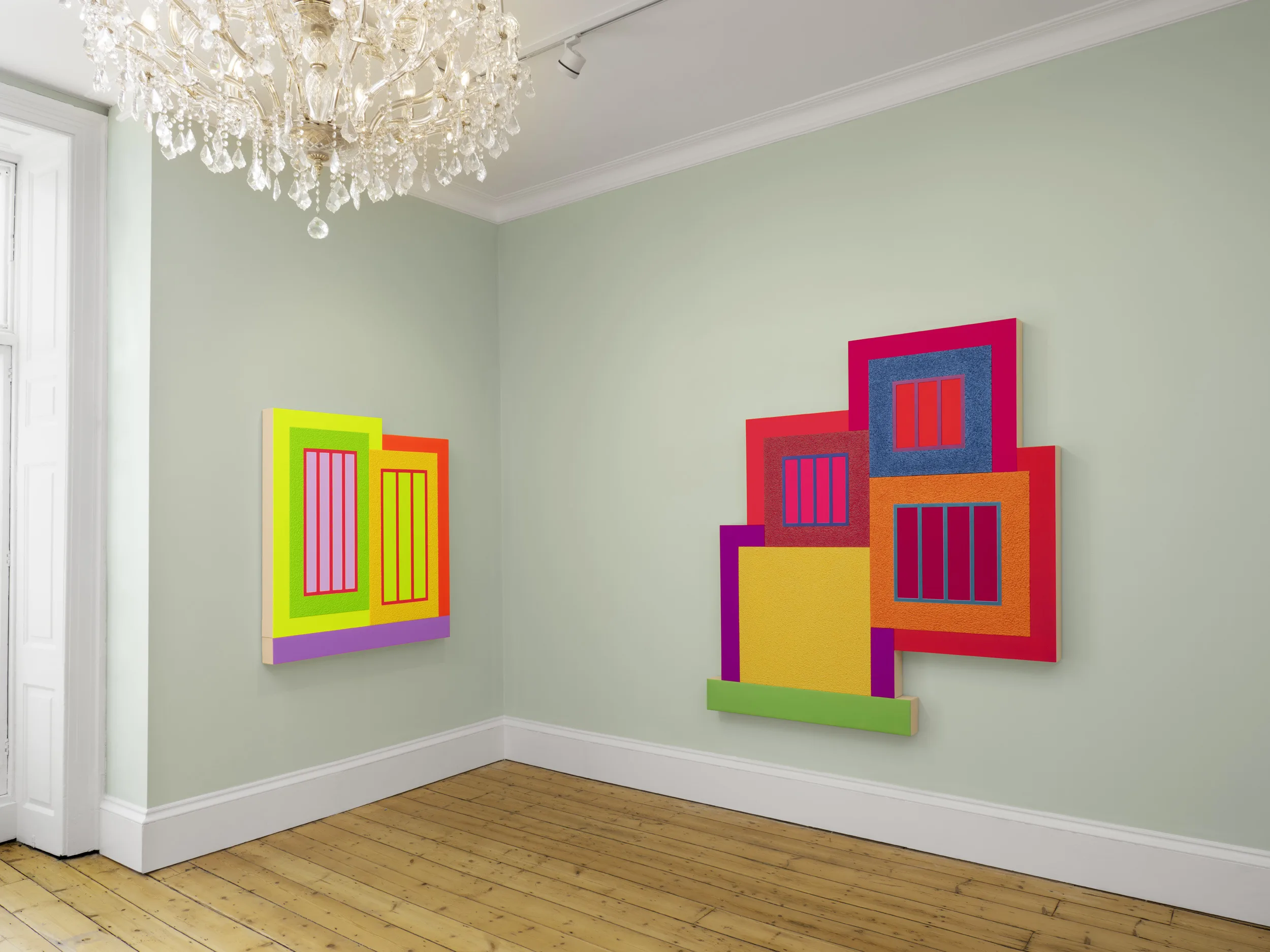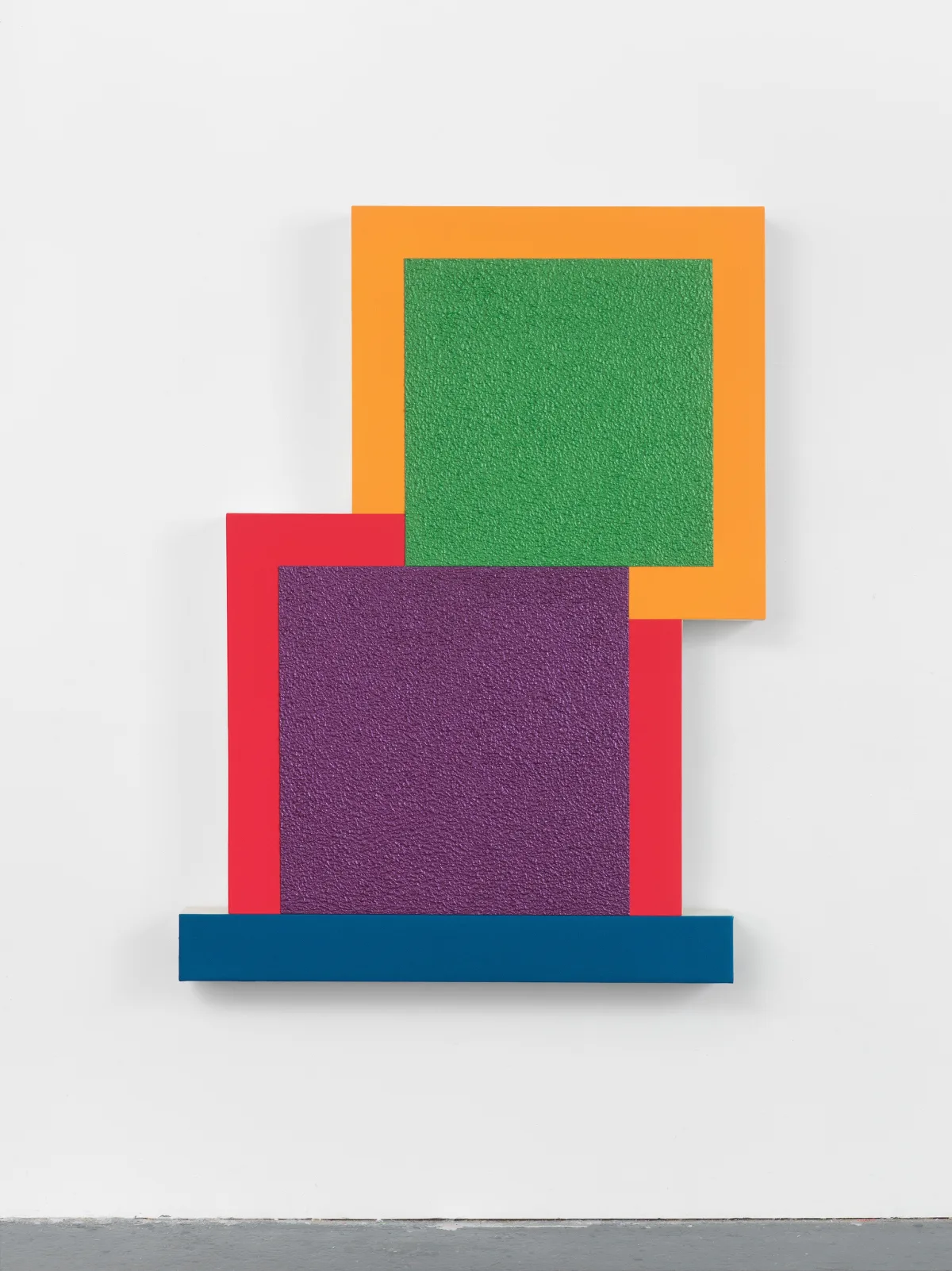Exhibition
Peter Halley

INSTALLATION VIEW “Peter Halley”, 2025. Courtesy of the Artist and MASSIMODECARLO.
MASSIMODECARLO is pleased to present an exhibition dedicated to American artist Peter Halley. A central figure in post-conceptual painting since the 1980s, Halley continues to explore geometry as a political language – one that reveals and interrogates the material, digital, and psychological structures that shape contemporary life.
Halley, founding publisher of the influential Index magazine (1996–2005) and former director of Yale’s esteemed M.F.A. painting program, has moved fluidly across disciplines throughout his career. Whether through painting, writing, teaching, or publishing, he has consistently maintained a critical focus on the intersections of art, technology, and ideology.

INSTALLATION VIEW “Peter Halley”, 2025. Courtesy of the Artist and MASSIMODECARLO.
Halley’s paintings have long traced the systems – both visible and invisible – that govern our lives. For over four decades, he has worked with a visual lexicon of “cells,” “prisons,” and “conduits,” drawing on the legacy of 20th-century geometric abstraction not to transcend reality, but to analyse its mechanisms of control. Where Minimalism envisioned the grid as a space of aesthetic order, Halley reimagined it as a charged network: wired, surveilled, and embedded within the logics of power.
This exhibition marks Halley’s return to London after several years, though, as he points out, the city has never quite left him. Since the 1980s, when his work was first shown at the Saatchi Gallery and, later, in a travelling solo exhibition at the ICA in 1991, London has remained a key site of dialogue and recognition. “There’s probably been more of a response on the part of artists to my work in London than anywhere else,” he reflects, recalling how a younger generation first encountered his works through those early, formative exhibitions.
The architecture of MASSIMODECARLO London – ornate, layered, and anything but neutral – becomes both a provocation and a counterpart. Halley’s response is characteristically site-aware, amplifying the tension between surface and structure, artifice and materiality. Set against the gallery’s green walls, his fluorescent and pearlescent compositions appear as luminous portals or controlled enclosures. He is often credited with having anticipated the psychological and spatial conditions of the digital age. In many ways, the present has caught up with his practice.

INSTALLATION VIEW “Peter Halley”, 2025. Courtesy of the Artist and MASSIMODECARLO.
The palette in this new body of work revisits the bold chromatic language of Halley’s paintings from the 1990s and early 2000s: pearlescent reds, synthetic greens, and glistening blues reminiscent of nail polish or car paint. “I think they’ll be dramatic in the space rather than harmonise with it,” Halley notes. The thick bars of his prison windows are built up with fifty coats of acrylic mixed with modelling paste, while the surrounding texture is created using Roll-A-Tex – a commercial finish typically used to cheaply cover walls or ceilings. These are paintings that mimic construction while exposing its illusions – at once façade and framework.
If early Halley was shaped by theory, particularly Baudrillard and Foucault, his vocabulary has by now become fully internalised. Today, the work no longer illustrates those ideas but carries them implicitly. Recent compositions fracture the once-unified canvas into separate zones, a kind of synthetic Cubism for the digital age. These interlocking fields – sometimes stacked like David Smith’s steel totems, sometimes flickering like open windows on a screen – reflect a world where space is always layered and provisional.
For Halley, this shallow depth is not a failure of illusionism but a philosophical stance. His paintings are architectural sections – side-views into our compartmentalised social lives. We remain physically isolated but digitally tethered, our environments governed by hidden systems designed by someone else.
Here, abstraction is laid bare. Halley paints the grid not as utopia but as infrastructure, as something built, imposed, and meant to be questioned. Over time, his formal language has deepened, but the structures he addresses remain stubbornly in place. The political and economic conditions he first addressed in the 1980s have not been resolved, only amplified. His work doesn’t look back – it insists.
2025. 09. 09. (Tue) – 2025. 10. 08. (Wed)
MASSIMODECARLO (London)